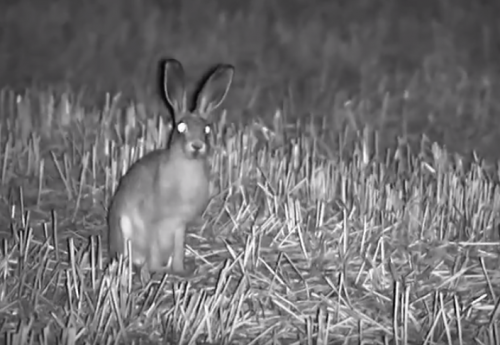Hares can be secretive, and on farms where they are present farmers may not realise just how many they have. Hares are active at night, and the best time to survey them is in late autumn and winter because there is much less cover to hide them. Day counts are not recommended as a lot of hares are missed by day.
The best way to assess numbers at night is from a vehicle by spotlight. Their eye-shine in a spotlight beam can be differentiated from other nocturnal species. After dark in winter and using a pair of binoculars (7×50) aligned with the spotlight, each field can be scanned for hares. By measuring the area surveyed within each field, it is straightforward to calculate hare density. Anything above 40 hares per 100 hectares (250 acres) is a high density.
- You will need a two-man team, 4×4 vehicle, two spotlights with 200-m beams, farm map, binoculars and warm clothes.
- Identify survey routes between 1-2km in length that your vehicle will cope with, using field margins and tramlines. On a 100-ha farm you could drive a single 1.5km route, but to monitor hares across a cluster multiple transects are needed with a minimum total length of 5 km. Name or number each transect and identify a route to drive between start-end points of each one.
- On two dry calm nights, one in November-December, and one in January-February, start driving the first transect 30mins after dusk, and mark the hares on your transect map. Record the date and start/end times of each transect on the map.
- For the most reliable results, drive each transect once a month from November to February and take an average of the hare counts.
- Repeat annually, keeping the dates, driving direction and number of visits consistent.

